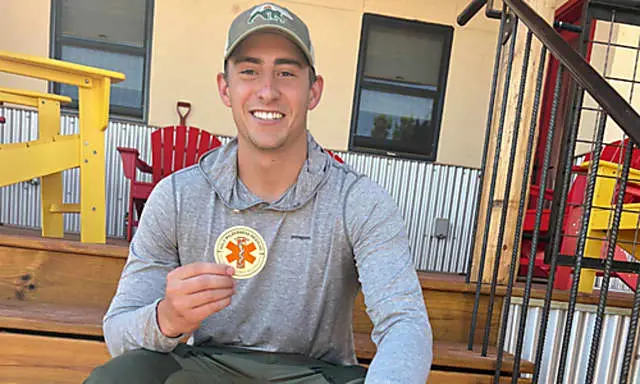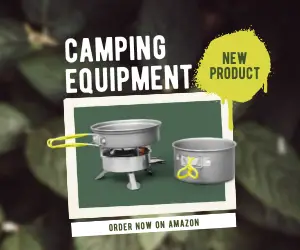[ad_1]
Whether you’re a seasoned backcountry camper or someone looking to brave their first night under a starry sky, countless outdoor adventures await throughout New York’s vast networks of state parks and preserves.
So how do you get into camping, and backpacking? Rich Gottlieb, an avid outdoor enthusiast and (now retired) longtime owner of Rock & Snow outfitters in New Paltz, encouraged folks to go on day hikes and try car camping first before heading out for an epic, solo adventure.
“Before taking off on a multiday backpacking trip, I would say you need to hike a bunch first,” Gottlieb said. “Break in those hiking boots, get used to using maps and navigating. Learn what you need to bring for a long day in the woods. Learn what is unnecessary. Hiking is a big component of backpacking and both have to do with endurance and experience so you want to build those basics first.”
Evan Thompson, manager of the Hudson Highlands, Breakneck Ridge and Fahnestock State Park near Cold Spring, agrees. “Unless you were brought up camping and backpacking, it’s not necessarily something people know how to do. Car camping is a great way to get started.”
After narrowing down an area you’re interested in exploring — the Catskills, the Adirondacks, or areas closer to New York City like the Hudson Highlands — plan some day hikes so that you get a sense of the trail system and figure out what you need in that pack.
Beginner’s gear to test out

Taking day trips to hike is a good way to test gear like shoes and backpacks before diving in to an overnight camping trip.
Rich GottliebAvoid cotton and focus on wicking fabrics to stay comfortable. Then there is the choice in shoes. “There are so many great, light hiking boots now,” said Gottlieb. “But you want to break them in and not save them for the big hike because that can end in blisters.”
Water is key and some sort of portable water filtration system (like LifeStraw), as is food, a map, a compass or GPS device, a head lamp (in case you get lost and the day closes in on you faster than your legs can go), and an extra layer. “It gets colder at different elevations or it could rain, so just having that extra, dry layer is key,” said Gottlieb, as is having “footwear that fits the terrain and the weather.”
Now that you’ve hiked and figured out your backpack and the specific power bars and trail mix that fuels your body, it may be time to start thinking about camping.
Car camping
“Most trail systems have campsites somewhere near them,” said Gottlieb, when talking about New York State parks and preserves.
Different sites require different levels of preparation. Backcountry campsites require you to carry everything you need in your backpack to sleep and eat in the wilderness overnight or for a weekend or longer. Pitching a tent while sorting out how to protect yourself from rain, bugs, and critters is a lot to bite off if it’s your first time camping,
It’s far easier, Gottlieb said, echoing Thompson’s comments, to start with car camping, which is simply finding a campsite where you can pull in with your vehicle and pitch your tent, with the built-in safety net of having a car to duck inside if the weather turns extreme, to store food and extra clothing, or to drive to the nearest town for more supplies.
North Lake and South Lake in the Catskills is one car popular car camping destination.
Camping in which tents or other essentials are already provided

Tentrr now offers 45 sites in four New York State Parks in the Hudson Valley. The arrangement is the same as its revenue split with private hosts: parks keep 80% of the booking fee.
TentrrIf you don’t want to invest in a ton of gear before knowing if camping is for you, consider a fully outfitted camping experience at select Tentrr sites in Harriman, Mills Norrie, Taconic and Lake Taghkanic State Parks. Tentrr provides the tents, beds and mattresses, and an array of equipment — plus the sites are all set up upon arrival. More details and reservations can be .
Another option is campsites with some basic essentials already established. Fahnestock Park near Cold Spring, for example, offers 70 sites for tent camping that include a fire ring, grill, and picnic table as well as comfort stations (hot showers and restroom facilities) and some basic camping outdoor essentials like firewood bundles and fire starters sold on the premises. These sites are also accessible from public transportation.
“We’re about an hour and change from New York City,” Thompson said. “You can literally ride the Metro-North train up and bike from the Cold Spring station to here, which many people do. We’re only 8 miles from the station.”
Because of the comfort stations and grilling stations, these campsites are a relatively safe bet for beginning campers. And offer endless miles of trails are nearby. “All you need is a tent, a sleeping bag, a pad, and some food,” he said.
How to plan for backcountry camping
If you are ready to take that leap and do some backcountry camping, Gottlieb shared tips for getting started:
- Plan around lengthy hiking trails. “If there’s a loop or an out and back that you really want to tackle but can’t do it all in one day, that’s a great way to start to plan your first backpacking trip,” he said. “You have a sense of the terrain, are somewhat familiar with the trail and just keep an eye out for a level site to camp on. The Catskills can be tricky because it’s hard to find level ground and that’s key especially if it rains.”
- Beware of bears and critters. While many backpackers and campers can be concerned about bears coming for their food, Gottlieb said that “what really gets you in trouble are rodents. If you leave a chocolate bar in your pack or even toothpaste or deodorant, they’ll chew through your tent, chew through your pack, take a few bites and leave. Keep everything out of your tent and pack and tie it up,” he cautioned.
- Gear up around seasonality. “You need a basic tent that will keep out rain and bugs,” he said. And ask a salesperson at a store about different sleeping bag weights and sleeping pads. “There are different pads for different seasons and you want to pay attention to that. A summer pad is not going to keep your body warm in the winter even if you have the top-of-the-line sleeping bag.”
- Additional camping basics checklist. In addition to the items mentioned above, “You need food. You’ll need a basic cooking stove and fuel, or at least something to boil water. There’s plenty of backpacking food out there that only requires water, which is a great way to hike light,” said Gottleib Some sort of solar charger for flashlights and electronics is also a worthwhile investment beyond having head lamps. Trekking poles can be used to stabilize yourself on rugged terrain, help get up the hills and save your knees on the downhills, and they can double as a stake to prop up a tent or tarp. Toss in a pair of gloves to save your hands if the weather takes a turn. Don’t forget a trowel and toilet paper for when nature calls.
Even veteran outdoorspeople still learn from each experience. The important thing is to start. Get a map, pick a campsite, find some trails that look fun, make sure you have the essentials, and go for it.
General camping tips

Harriman State Park is the second-largest state park in New York, with more than 200 hiking trails and several campsites for campers of all experience levels.
Rich GottliebYou can hike portions of the Appalachian Trail, hike a few peaks in the Catskills, navigate a more rugged week in the Adirondacks or do some tent camping with the car and comfort station only a stone’s throw away.
Whatever you do, make reservations as soon as possible, especially for more well-traveled camping sites. All reservations for State Park campsites are made through the Reserve America website, and Thompson cautioned that they “fill up fast, especially on the weekends.” And there are 56 campsites managed by the Department of Environmental Conservation — several in the Catskills Forests and Adirondack Preserve region — as well as a bevy of smaller, lesser-known campsites.
Explore options at the DEC’s camping guide and ReserveAmerica website.
“Backpacking becomes its own way of life, its own world,” said Gottlieb. “Everything becomes quiet and it’s about finding a good spot to camp and … looking at the stars and listening to the sounds around you.”
More Outdoors News and Travel
[ad_2]
Source link





